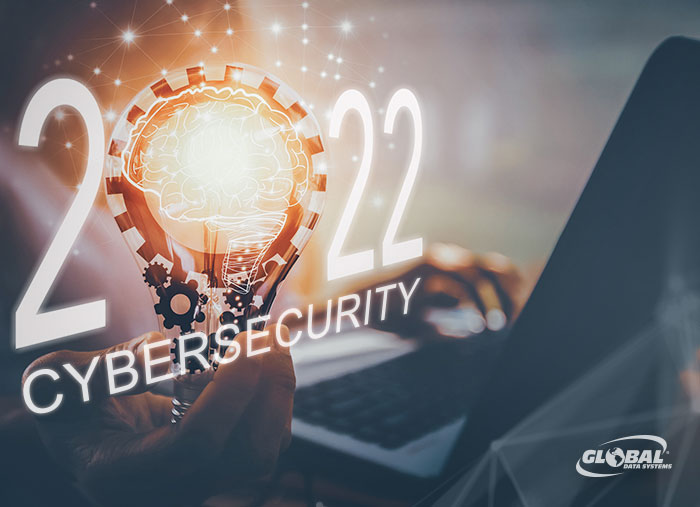Strengthen cyber resilience to withstand and recover from cyber threats.
Wiki Article
Top Cybersecurity Predictions for 2024: Remain Ahead of Arising Dangers
As we come close to 2024, the cybersecurity landscape is poised for significant transformation, driven by emerging threats that companies must not only anticipate yet additionally tactically address. With governing modifications on the horizon and an important emphasis on cybersecurity training, it is crucial for companies to reassess their approaches to continue to be resistant.Surge of AI-Driven Strikes
As companies significantly take on expert system innovations, the capacity for AI-driven strikes is becoming a paramount worry in cybersecurity. Cybercriminals are leveraging AI to boost the sophistication and effectiveness of their attacks, creating a landscape where conventional safety actions may falter. These assaults can make use of artificial intelligence formulas to recognize susceptabilities in systems and networks, resulting in more targeted and destructive violations.AI can automate the reconnaissance phase of an attack, making it possible for opponents to collect huge quantities of information promptly (cyber attacks). This capability not only shortens the time required to launch an assault however likewise increases its accuracy, making it harder for protectors to anticipate and reduce dangers. In addition, AI can be used to produce convincing phishing plans, produce deepfake web content, or adjust data, better complicating the cybersecurity landscape
Organizations have to prioritize the integration of AI-driven cybersecurity solutions to respond to these emerging risks. By employing innovative threat discovery systems, organizations can improve their ability to recognize and reduce the effects of AI-generated strikes in genuine time. Constant investment in training and awareness programs is also essential, as it gears up employees to identify and reply to prospective AI-driven threats efficiently.
Enhanced Ransomware Refinement
The surge of AI-driven assaults is not the only trend reshaping the cybersecurity landscape; ransomware attacks have actually also evolved, ending up being increasingly innovative and targeted. As cybercriminals improve their methods, companies deal with heightened dangers that call for flexible methods to mitigate possible damage.
Modern ransomware hazards now leverage advanced techniques, such as dual extortion, where opponents not just secure data however also threaten to leak delicate details if their needs are not satisfied. This includes an additional layer of stress on targets, often engaging them to pay ransom money to secure their track records and client count on.
Additionally, making use of automated devices and artificial intelligence formulas by perpetrators has streamlined the strike process, enabling them to recognize susceptabilities much more efficiently and tailor their techniques against specific targets. Such growths have resulted in a startling rise of attacks on critical framework, health care systems, and supply chains, emphasizing the demand for robust cybersecurity structures that prioritize real-time threat discovery and reaction.
To respond to these progressing risks, companies should purchase detailed training, advanced protection innovations, and case reaction intends that integrate lessons gained from past ransomware cases, ensuring they continue to be one step ahead of significantly complex assaults.
Growth of IoT Susceptabilities
With the quick growth of the Net of Points (IoT), susceptabilities associated with these interconnected tools have ended up being a crucial worry for organizations and individuals alike. The spreading of smart gadgets, from home devices to commercial sensors, has actually created an extensive strike surface for cybercriminals. Numerous IoT tools are released with minimal safety methods, frequently utilizing default passwords or obsolete firmware, making them susceptible to exploitation.As devices end up being interconnected, the capacity for large strikes increases. As an example, jeopardized IoT gadgets can work as access points for enemies to penetrate even more safe and secure networks or launch Distributed Denial of Service (DDoS) attacks. 7 Cybersecurity Predictions for 2025. The absence of standardization in IoT security gauges more exacerbates these susceptabilities, as differing suppliers apply varying degrees of protection
In addition, the raising refinement of malware targeting IoT tools presents considerable dangers. Risk actors are continually developing brand-new approaches to manipulate these weak points, causing prospective data violations and unauthorized access to sensitive info. As we relocate right into 2024, companies have to focus on IoT protection, carrying out robust actions to safeguard their networks and minimize the threats connected with this quickly expanding landscape.
Governing Modifications Impacting Security

In 2024, we expect to see more stringent conformity needs for companies, specifically those that manufacture or deploy IoT gadgets. The intro of policies such as the European Union's Cyber Durability Act and updates to existing structures like the NIST Cybersecurity Framework will highlight protection deliberately. Organizations will be mandated to carry out durable security steps from the first phases of item development, making sure a proactive stance against prospective vulnerabilities.
Furthermore, governing bodies are most likely to enforce substantial fines for non-compliance, engaging services to prioritize cybersecurity financial investments. This shift will not just improve the overall security position of organizations however will certainly additionally cultivate a society of accountability in protecting user data. As policies tighten, the onus will increasingly fall on companies to demonstrate compliance and safeguard against the ever-evolving threats in the digital landscape.
Focus on Cybersecurity Training
Organizations' dedication to cybersecurity training is coming to be significantly critical as threats evolve and attack vectors increase. With cybercriminals continually creating innovative methods, it is vital for workers in any way levels to recognize the threats and acknowledge their role in reducing them. Comprehensive training programs equip staff with the expertise and abilities required to identify possible dangers, such as phishing assaults, social engineering tactics, and malware.In addition, a society of cybersecurity understanding fosters vigilance amongst staff members, minimizing the probability of human error, which remains a significant susceptability in several companies. Regularly upgraded training components that show the current threats will certainly make sure that personnel remain enlightened and with the ability of responding effectively.


In 2024, companies will likely prioritize continuous education and learning and simulation workouts, enabling workers to exercise their reaction to real-world scenarios. Collaboration with cybersecurity specialists for tailored training services might also come to be more widespread. Inevitably, purchasing worker training not only reinforces an organization's protection stance yet likewise cultivates a positive approach to cybersecurity, reinforcing the idea that protection is a common obligation across the enterprise.
Verdict
Finally, the cybersecurity landscape in 2024 will be shaped by the rise of AI-driven strikes, progressively sophisticated ransomware tactics, and the development of vulnerabilities associated with IoT tools. Regulative modifications will certainly demand improved compliance actions, highlighting the significance of incorporating safety and security deliberately. A solid emphasis on detailed cybersecurity training will be crucial cyber resilience in cultivating a business culture durable to emerging hazards. Positive adjustment to these patterns will be crucial for efficient protection methods.Report this wiki page